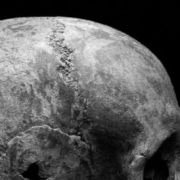Introduction: The Challenge of Stature Estimation in Forensic Contexts – Forensic anthropologists, archaeologists, criminalists, pathologists, and forensic medical examiners frequently encounter the critical need to estimate stature from skeletal remains across a diverse range of challenging environments. Whether carefully excavating ancient burial sites in remote field locations under harsh weather conditions, analyzing skeletal evidence within the controlled setting of a laboratory, or conducting assessments on the move during travel to crime scenes or archaeological digs, the ability to determine stature swiftly and accurately remains a cornerstone of forensic and anthropological investigation. Stature estimation serves as a vital tool in the identification of unknown individuals, providing key biometric data that can be cross-referenced with missing persons records to aid in criminal investigations or disaster victim identification. In archaeological contexts, it offers profound insights into the biological and demographic profiles of past populations, illuminating aspects such as health status, nutritional adequacy, and socio-economic conditions that shaped their lives.
Posts
Reading Death in the Bones: How Cranial Sutures Reveal Age at Death – Imagine you’re holding a skull in your hands. There’s no hint of the life this person once led, no skin, no muscles, no eyes to tell tales. But the bones themselves, the lines that connect them, speak their own language. In forensic anthropology and archaeology, there is a method that seems like an art but is firmly rooted in science: determining the age at death by examining the cranial sutures, or sutures. These finely ossified connections that stretch across the skull give us crucial clues about how old a person was when they died.

